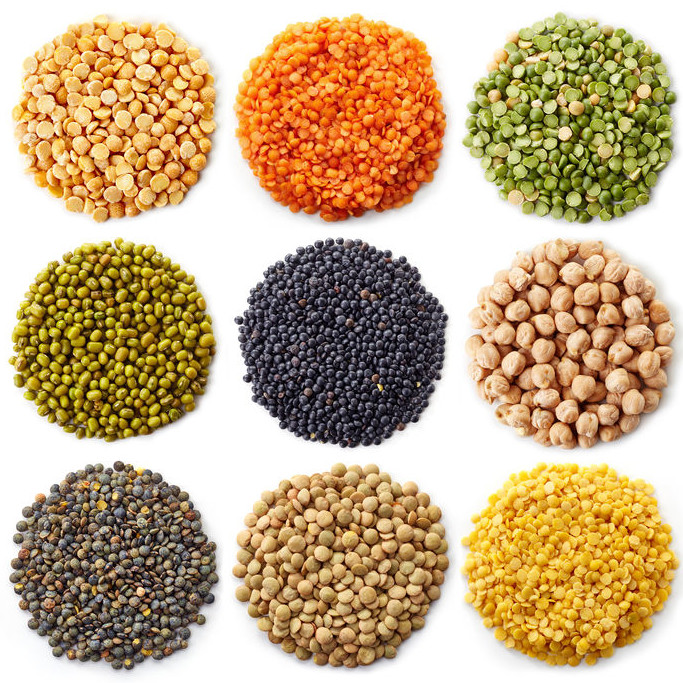
Soy Replacement
What is Soy Replacement?
Soy, also known as soybean, is a legume and an important source of nutrients in the human diet. It’s products are widely used in baked goods for:
- Improving nutritional value
- Providing a convenient alternative for eliminating gluten from diets targeting celiacs
- Replacing eggs
However due rising soy allergies, food producers are looking for soy replacement solutions. Chickpeas, lentils, lupine, sorghum, broad beans and many other legumes can replace soy in many formulations. Some of these are rich in high-quality protein and fiber and contain low levels of fat compared to soy.
Origin
Allergy to soy is on the rise and is estimated to be at 0.4% in children alone.1 Symptoms range from mild (hives, itching) to rare incidents of life-threatening anaphylaxis. The only treatment for soy allergy is removing soy from the diet. The FDA lists soy as a major food allergen requiring adequate labeling. This has helped advanced research and testing of alternatives to soy in baking.
Nutrition
Macronutrient composition of legume flour alternatives compared to soy flour:
| Legume | Protein (%) | Carbohydrate (%) | Fiber (%) | Lipids (%) | Reference |
| Soybean flour | 51.4 | 33.9 | 17.5 | 1.2 | 2 |
| Chickpea flour | 22.4 | 57.8 | 10.8 | 6.7 | 3 |
| Lentil flour | 24.6 | 63.4 | 10.7 | 1.1 | 4 |
| Lupin flour | 36.2 | 40.4 | 18.9 | 9.7 | 5 |
| Pea flour | 33.3 | 60 | 26.7 | 0 | 6 |
| Sorghum flour | 11.7 | 73.5 | 8.8 | 2.9 | 7 |
Application
- Chickpea flour: used in gluten-free formulation such as breads, muffins or crackers to provide a tender texture and nutty taste.
- Lentil and lupin flours: used in bread, biscuit, cookie, cake, brownies, desserts, muffin, etc.
- Pea flour: bread, bagel, brownie, burger buns, cookies, desserts, doughnut, muffin, tortilla, pan bread, extruded goods, etc. It has many desirable attributes in baking. For example, it has a neutral color and mild flavor, and has good water holding capacity. It is a non-allergen and non-GMO as well as an economical alternative to soy proteins and flours.
- Sorghum flour: best when used as a composite in gluten-free pastas, tortillas, semi-leavened breads and chapatis.
FDA regulation
Soy is one of the major food allergens identified by the FDA (21CRF101.82) which requires specific labeling.6 The FDA allows health claim correlating dietary intake of soy protein and reduced risk of cardiovascular disease.8 Soy protein and pea protein are GRAS.8
References
- Savage, J. H., Kaeding, A. J., Matsui, E. C., and Wood, R. A. The natural history of soy allergy. Journal of Allergy and Clinical Immunology, 125(2010): 683-686.
- Chickpea flour (besan). Accessdata. 01 April. 2019. https://fdc.nal.usda.gov/fdc-app.html#/food-details/174288/nutrients. Accessed on 7 Nov 2019.
- Lentils (raw). Accessdata. 01 April. 2019. https://fdc.nal.usda.gov/fdc-app.html#/food-details/172420/nutrients. Accessed on 7 Nov. 2019.
- Lupins (mature seeds, raw). Accessdata. 01 April. 2019. https://fdc.nal.usda.gov/fdc-app.html#/food-details/172423/nutrients. Accessed on 7 Nov. 2019.
- Pea flour. Accessdata. 01 April.2019. https://fdc.nal.usda.gov/fdc-app.html#/food-details/578737/nutrients. Accessed on 7 Nov. 2019.
- Sorghum flour. Accessdata. 01 April.2019. https://fdc.nal.usda.gov/fdc-app.html#/food-details/542689/nutrients. Accessed on 7 Nov. 2019.
- “CFR – Code of Federal Regulations 21CRF101.82.” Accessdata. 01 April.2019 https://www.accessdata.fda.gov/scripts/cdrh/cfdocs/cfcfr/cfrsearch.cfm?fr=101.82. Accessed on 7 Nov 2019.
- Food Allergen Labeling And Consumer Protection Act of 2004 Questions and Answers. Accessdata. July 18.2006 https://www.fda.gov/food/food-allergensgluten-free-guidance-documents-regulatory-information/food-allergen-labeling-and-consumer-protection-act-2004-questions-and-answers. Accessed on 7 Nov 2019.

